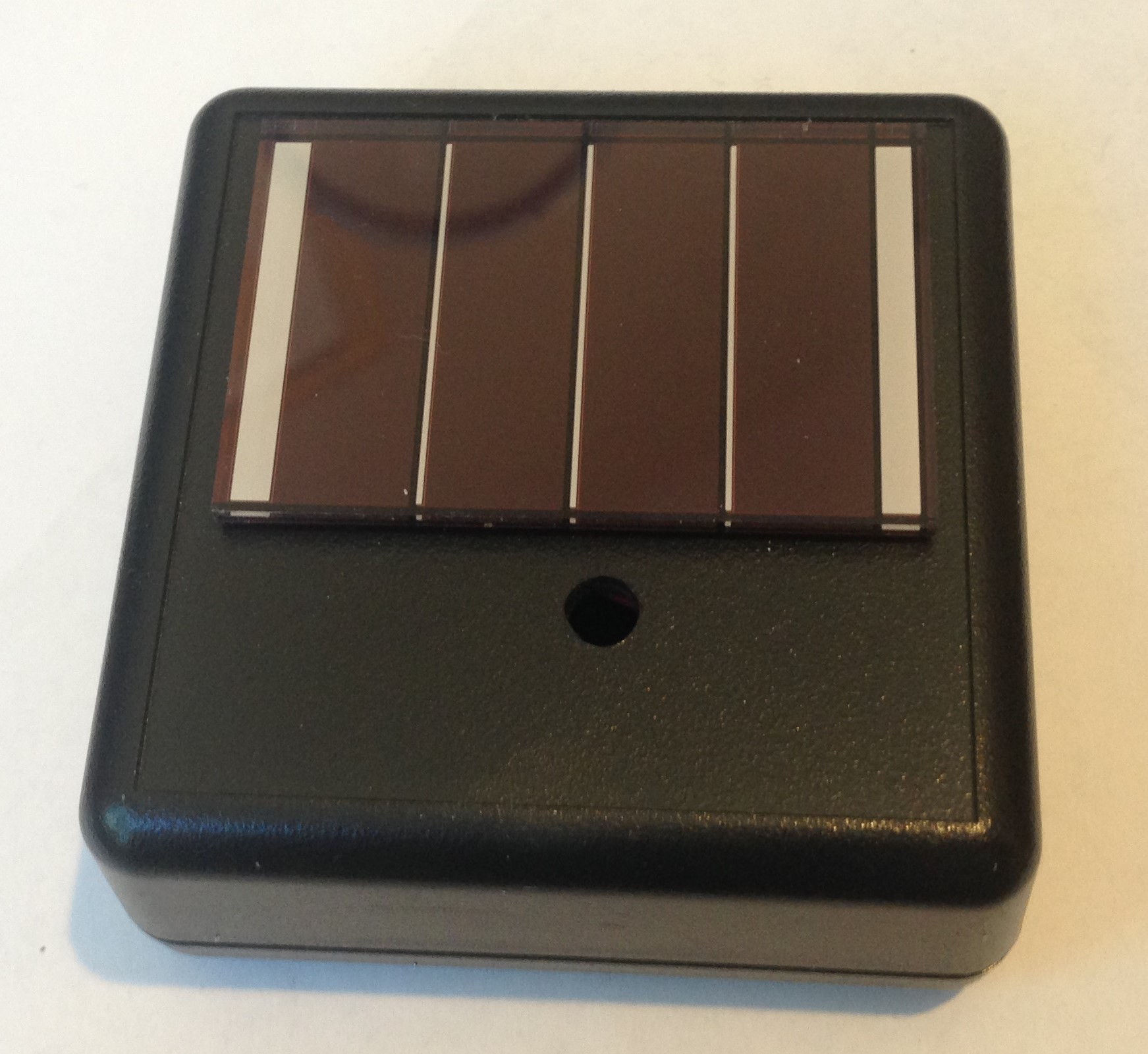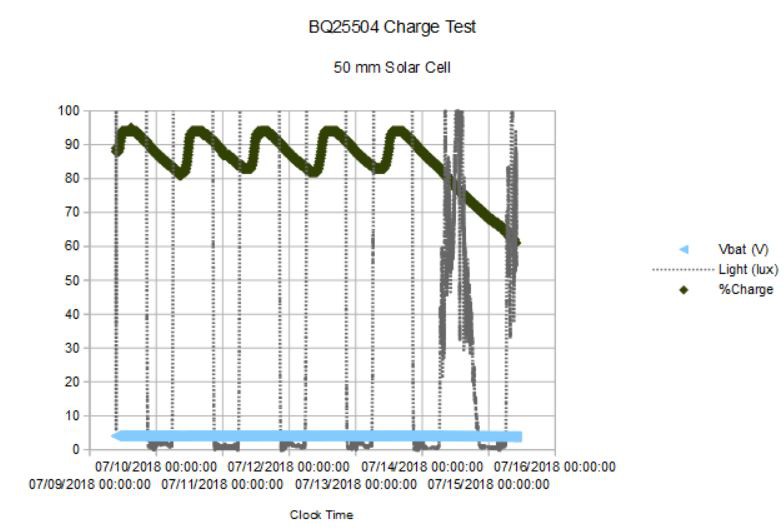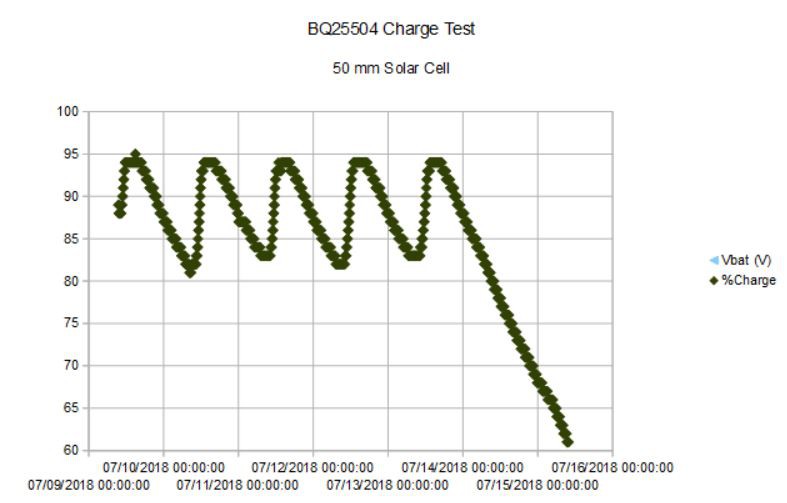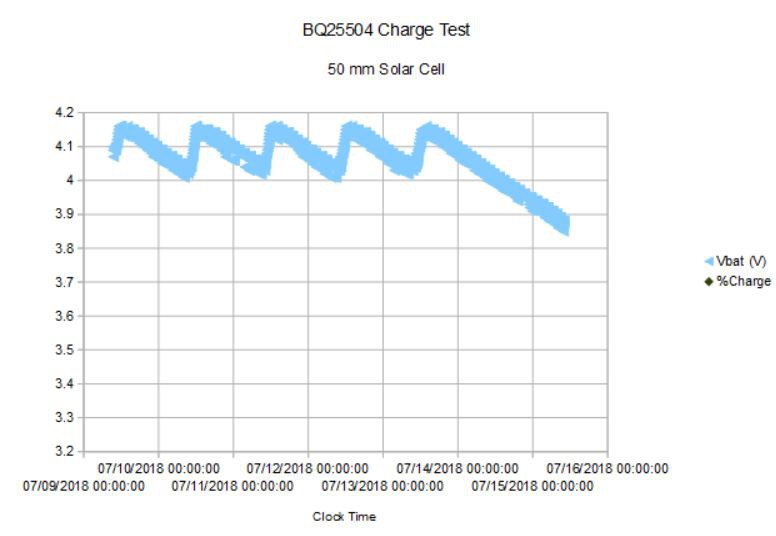15 July 2018
First a word about packaging. I designed the BQ25504 breakout board to be as small as possible because I had in mind the idea that it would become part of an integrated (hybrid) power source. That is, the LiPo battery, solar cell, and BQ25504 would be combined into a single integrated (and compact) "super battery" that would just plug into my environmental data logging devices.

I even stuck the battery onto the back of the solar cell with foam tape and could do the same with the BQ25504, using foam tape to attach the BQ25504 board to the battery, for example.
But this turns out not to be a very practical idea really, since it is always better to have a sensible container for the electronics and the solar cell is best mounted on the outside for sun exposure with the electronics protected somewhat from moisture, etc.

So this is the container I created out of a $1 Bud box; the hole is to allow the VEML6040 ambient light sensor to monitor the light intensity, and to allow some air in for the BME280 pressure, temperature, and humidity sensor. And the only problem with this is that when it rains the electronics get wet and stop working. So I found some air permeable but water impermeable patches from Porex that at least let the pressure and humidity sensors work while keeping the inside of the container dry. I would have to use a transparent window for the light measurements. I will discuss this further on the SensorTile project page since this Ultra-Low-Power LiPo Charger project is supposed to be focused on the BQ25504 and its performance.
And perform it does, just as expected once the system load is connected to Vbat as discussed in the last log. Here is the results of my latest test of a production BQ25504 breakout board:

The experiment started at 9:30 AM on 7/9 just before local sunrise at the device (50-mm-wide solar cell, 105 mAH LiPo battery, BQ25504 breakout board and SensorTile.v01g). Fours hours of direct sun charged the LiPo battery from 89% (as determined by the on-board MAX17048 battery monitor) to a peak of 95% at 3 PM. Then the battery charge dropped to a minimum of 81% at 9 AM on 7/10 (vertical grid lines mark midnight). And the cycle repeats for five days until on 7/13 I removed the device from outside to my inside workstation where it was no longer exposed to direct sun.
Here is a close up of the battery charge history:

and the battery voltage history:

If I had left the device undisturbed it would have remained running indefinitely (as long as there were four hours of sunlight per day), recording pressure, humidity, temperature, air quality, acceleration, RGBW light levels, battery charge and voltage, and time data every 10 seconds until the 8 MByte SPI flash filled up (probably another 20 days). Also sending out BLE reports of pressure, temperature, humidity, air quality and battery charge and voltage.
The charge dropped from 94% to 61% in 43 hours after the device was removed from sun exposure, meaning the 105 mAH LiPo battery would have lasted a total of ~130 hours on a full charge, so an average current of 105 mAH/130 hours ~800 uA. This is a little less than I measured last time, but I also improved the sketch to minimize power further. Again, this is a proper subject for the SensorTile project.
The BQ25504 plus solar cell makes for a practical power source for remotely-distributed environmental sensors and data loggers. Yes, one can always use a much larger battery. But for the smallest device implementation and/or to achieve ultra-long-term battery service, the BQ25504 clearly does the job.
 Kris Winer
Kris Winer
Discussions
Become a Hackaday.io Member
Create an account to leave a comment. Already have an account? Log In.